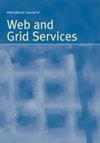求助PDF
{"title":"Attack resistance-based topology robustness of scale-free internet of things for smart cities","authors":"T. N. Qureshi, Nadeem Javaid, Ahmad S. Almogren, Zain Abubaker, Hisham N. Almajed, Irfan Mohiuddin","doi":"10.1504/ijwgs.2021.10040915","DOIUrl":null,"url":null,"abstract":"In internet of things (IoTs), the increase in the number of devices is directly proportional to the number of applications. The exponential growth of devices increases both the network complexity and risk against topology robustness. Moreover, the network is also prone to targeted and malicious attacks. In this paper, enhanced angle sum operation ROSE (EASO-ROSE), enhanced ROSE, adaptive genetic algorithm (AGA) and cluster adaptive genetic algorithm (CAGA) are proposed to cater the topology robustness issue for IoT enabled smart cities. In addition, the proposed solutions keep the nodes’ initial degree distribution unchanged by maintaining the scale-free nature of the topology. Enhanced ROSE and EASO-ROSE Copyright © 2021 Inderscience Enterprises Ltd. 344 T.N. Qureshi et al. significantly improve the topology robustness by calculating the difference in nodes’ degree while rearranging the surrounding angles according to the highest degree node. CAGA and AGA also significantly improve the topology robustness by using adaptive probabilities of crossover and mutation that guide both algorithms to converge towards global optimum solution. Extensive simulations are preformed to evaluate the performance of the proposed strategies. Schneider R is used as a performance metric in the simulations. The results depict that the proposed algorithms perform 61.3%, 48.3%, 45.5% and 34.95%, better than simulating annealing algorithm.","PeriodicalId":54935,"journal":{"name":"International Journal of Web and Grid Services","volume":"18 1","pages":"343-370"},"PeriodicalIF":1.0000,"publicationDate":"2021-01-01","publicationTypes":"Journal Article","fieldsOfStudy":null,"isOpenAccess":false,"openAccessPdf":"","citationCount":"4","resultStr":null,"platform":"Semanticscholar","paperid":null,"PeriodicalName":"International Journal of Web and Grid Services","FirstCategoryId":"94","ListUrlMain":"https://doi.org/10.1504/ijwgs.2021.10040915","RegionNum":4,"RegionCategory":"计算机科学","ArticlePicture":[],"TitleCN":null,"AbstractTextCN":null,"PMCID":null,"EPubDate":"","PubModel":"","JCR":"Q4","JCRName":"COMPUTER SCIENCE, INFORMATION SYSTEMS","Score":null,"Total":0}
引用次数: 4
引用
批量引用
智慧城市无标度物联网的抗攻击拓扑鲁棒性
在物联网(iot)中,设备数量的增加与应用数量成正比。设备的指数级增长增加了网络的复杂性和拓扑鲁棒性的风险。此外,网络也容易受到针对性和恶意攻击。本文提出了增强型角度和运算ROSE (EASO-ROSE)、增强型ROSE、自适应遗传算法(AGA)和聚类自适应遗传算法(CAGA),以满足物联网智能城市的拓扑鲁棒性问题。此外,所提出的解决方案通过保持拓扑的无标度特性来保持节点的初始度分布不变。版权©2021 Inderscience Enterprises Ltd. 344 T.N. Qureshi等通过计算节点度差,同时根据最高度节点重新排列周围角度,显著提高了拓扑鲁棒性。CAGA和AGA还通过使用交叉和突变的自适应概率来指导两种算法收敛到全局最优解,从而显著提高了拓扑鲁棒性。进行了大量的仿真来评估所提出的策略的性能。在模拟中使用Schneider R作为性能指标。结果表明,所提算法的效率分别比模拟退火算法高61.3%、48.3%、45.5%和34.95%。
本文章由计算机程序翻译,如有差异,请以英文原文为准。


